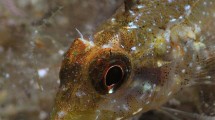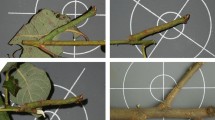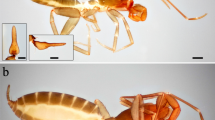Abstract
ALTHOUGH the Chilopoda are a widely distributed order, they have attracted little notice from zoologists. Centipedes are carnivorous, feeding on insects and their larvæ, and occasionally worms and other small animals. The account by F. G. Sinclair in "The Cambridge Natural History" (1895) is still the most comprehensive survey of the group; but recent observations are at variance on certain points. Sinclair describes the breeding habits of Lithobius forficatus, and states: "If the male Lithobius sees the egg, he makes a rush at the female, seizes the egg and at once devours it". No reference is made as to the manner in which centipedes recognize their food, but it is implied that the sense of sight is used. Now Lithobius is almost invariably nocturnal, and can only be found in day-time underneath stones and piles of dead leaves. That it is negatively phototactic and positively thigmotactic has been confirmed by simple experiments. The eyes are clusters of ocelli, 25–50 in number, present in many groups of Lithobiidæ but absent in some. It would appear unlikely that the sense of sight is used in the recognition of food, and indeed, this has been proved experimentally by painting the eyes with black pigment. Nor is the sense of smell employed. Experimental observations indicate that Lithobius hunts for its prey by the sense of touch, which is extremely sensitive. Centipedes appear oblivious to the presence of food unless they happen to touch it with the base of the antenna.
This is a preview of subscription content, access via your institution
Access options
Subscribe to this journal
Receive 51 print issues and online access
$199.00 per year
only $3.90 per issue
Buy this article
- Purchase on Springer Link
- Instant access to full article PDF
Prices may be subject to local taxes which are calculated during checkout
Similar content being viewed by others
Author information
Authors and Affiliations
Rights and permissions
About this article
Cite this article
CLOUDSLEY-THOMPSON, J. Behaviour of the Common Centipede Lithobius forficatus. Nature 156, 537–538 (1945). https://doi.org/10.1038/156537a0
Issue Date:
DOI: https://doi.org/10.1038/156537a0
Comments
By submitting a comment you agree to abide by our Terms and Community Guidelines. If you find something abusive or that does not comply with our terms or guidelines please flag it as inappropriate.



